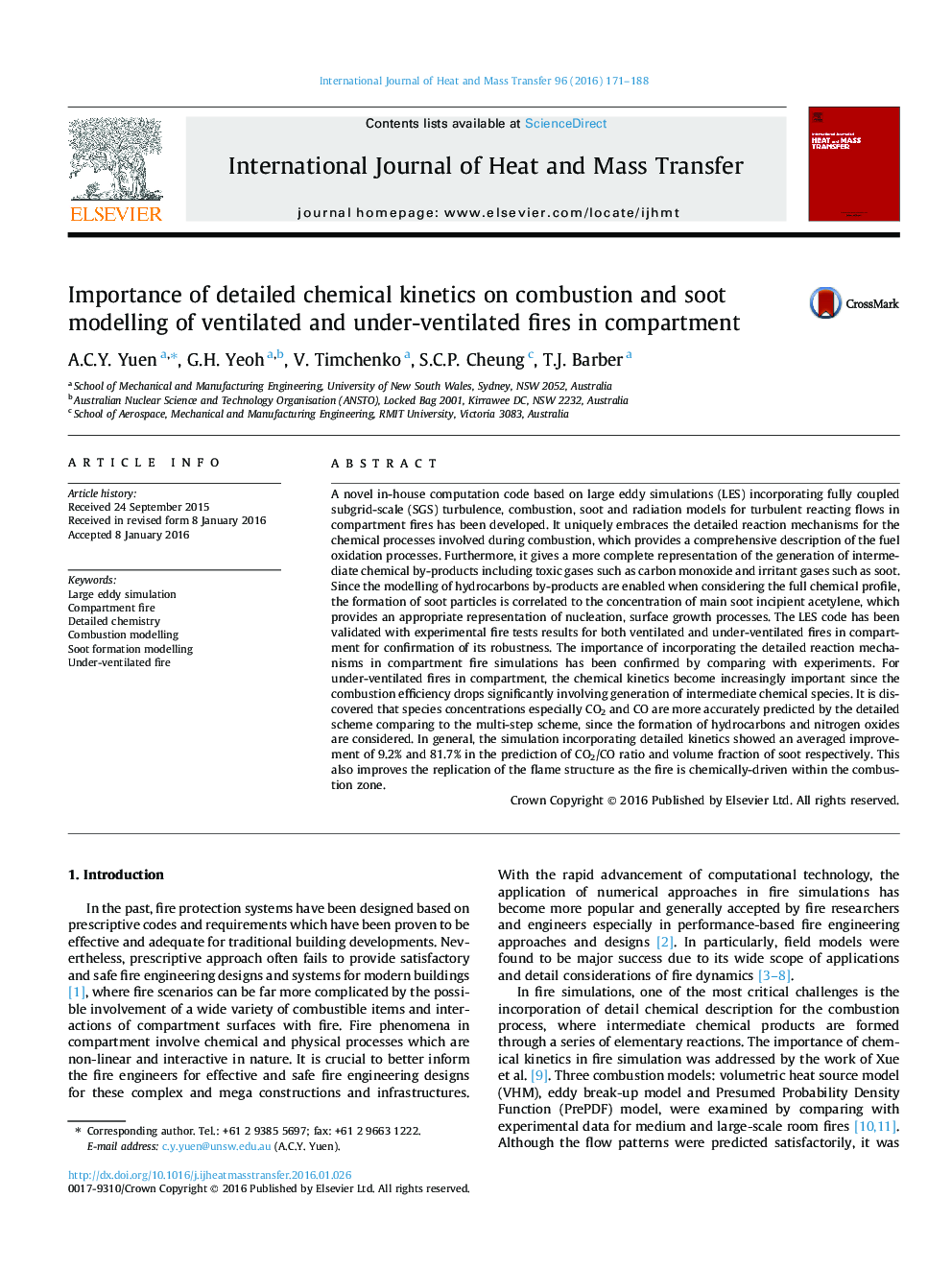| کد مقاله | کد نشریه | سال انتشار | مقاله انگلیسی | نسخه تمام متن |
|---|---|---|---|---|
| 7055790 | 1458046 | 2016 | 18 صفحه PDF | دانلود رایگان |
عنوان انگلیسی مقاله ISI
Importance of detailed chemical kinetics on combustion and soot modelling of ventilated and under-ventilated fires in compartment
ترجمه فارسی عنوان
اهمیت سینتیک شیمیایی دقیق در احتراق و مدل سازی گرده از آتش سوزی تهویه شده و تحت تهویه در محفظه
دانلود مقاله + سفارش ترجمه
دانلود مقاله ISI انگلیسی
رایگان برای ایرانیان
کلمات کلیدی
شبیه سازی گردابی بزرگ، آتش خاموش، شیمی تکمیلی، مدل سازی احتراق مدلسازی تشکیل ذوب، آتش تحت تهویه،
موضوعات مرتبط
مهندسی و علوم پایه
مهندسی شیمی
جریان سیال و فرایندهای انتقال
چکیده انگلیسی
A novel in-house computation code based on large eddy simulations (LES) incorporating fully coupled subgrid-scale (SGS) turbulence, combustion, soot and radiation models for turbulent reacting flows in compartment fires has been developed. It uniquely embraces the detailed reaction mechanisms for the chemical processes involved during combustion, which provides a comprehensive description of the fuel oxidation processes. Furthermore, it gives a more complete representation of the generation of intermediate chemical by-products including toxic gases such as carbon monoxide and irritant gases such as soot. Since the modelling of hydrocarbons by-products are enabled when considering the full chemical profile, the formation of soot particles is correlated to the concentration of main soot incipient acetylene, which provides an appropriate representation of nucleation, surface growth processes. The LES code has been validated with experimental fire tests results for both ventilated and under-ventilated fires in compartment for confirmation of its robustness. The importance of incorporating the detailed reaction mechanisms in compartment fire simulations has been confirmed by comparing with experiments. For under-ventilated fires in compartment, the chemical kinetics become increasingly important since the combustion efficiency drops significantly involving generation of intermediate chemical species. It is discovered that species concentrations especially CO2 and CO are more accurately predicted by the detailed scheme comparing to the multi-step scheme, since the formation of hydrocarbons and nitrogen oxides are considered. In general, the simulation incorporating detailed kinetics showed an averaged improvement of 9.2% and 81.7% in the prediction of CO2/CO ratio and volume fraction of soot respectively. This also improves the replication of the flame structure as the fire is chemically-driven within the combustion zone.
ناشر
Database: Elsevier - ScienceDirect (ساینس دایرکت)
Journal: International Journal of Heat and Mass Transfer - Volume 96, May 2016, Pages 171-188
Journal: International Journal of Heat and Mass Transfer - Volume 96, May 2016, Pages 171-188
نویسندگان
A.C.Y. Yuen, G.H. Yeoh, V. Timchenko, S.C.P. Cheung, T.J. Barber,
